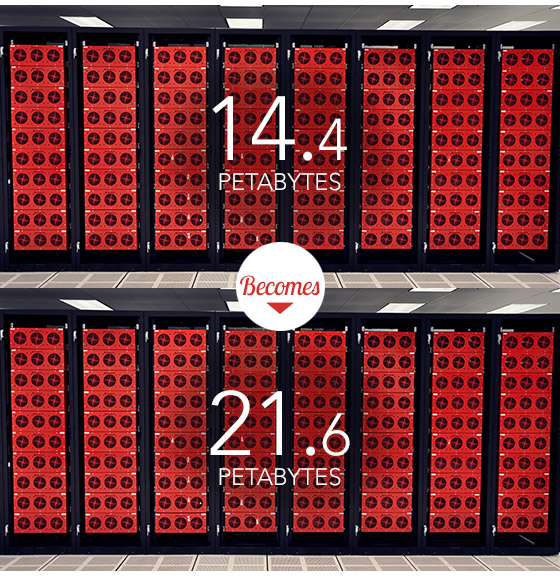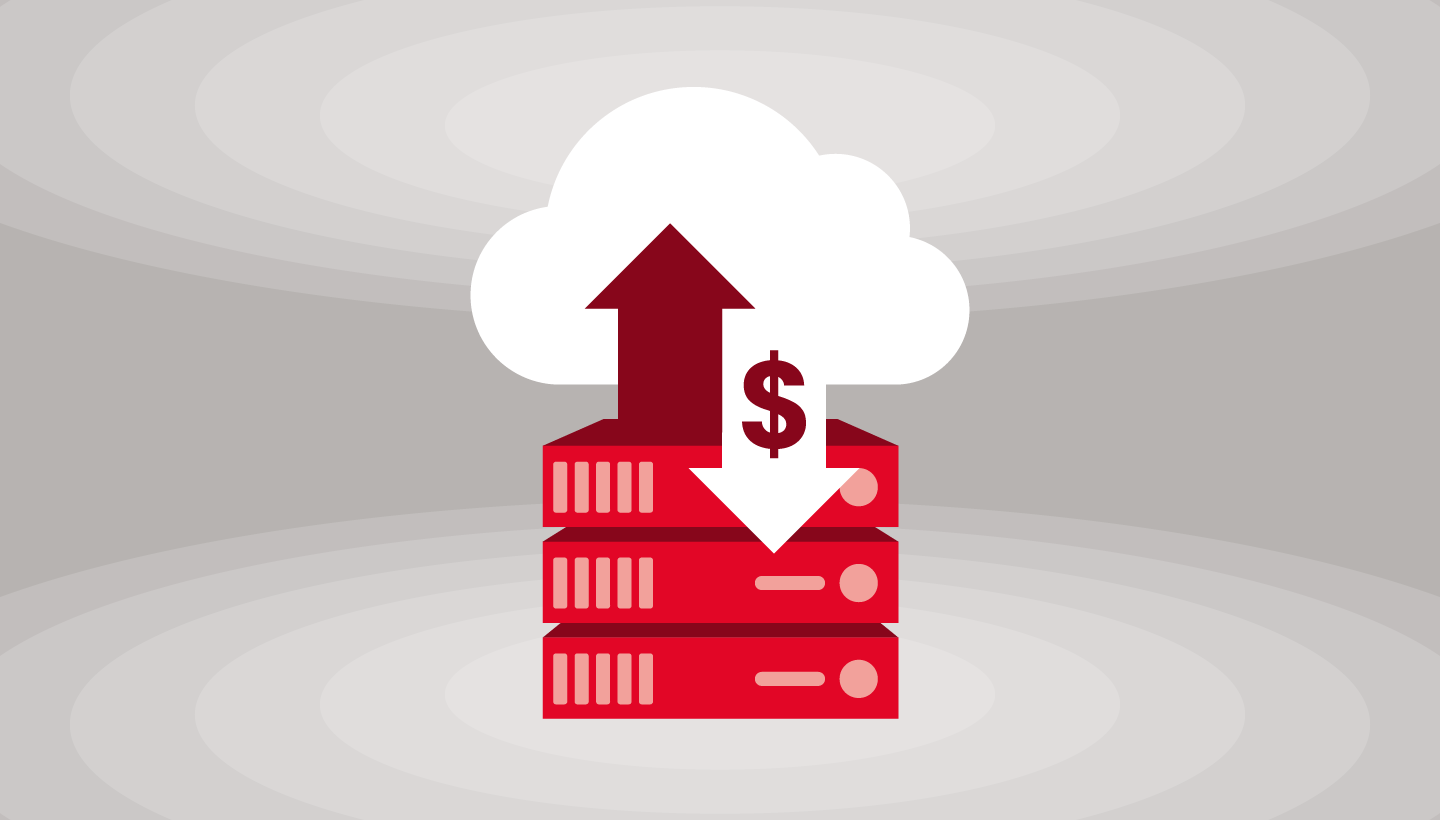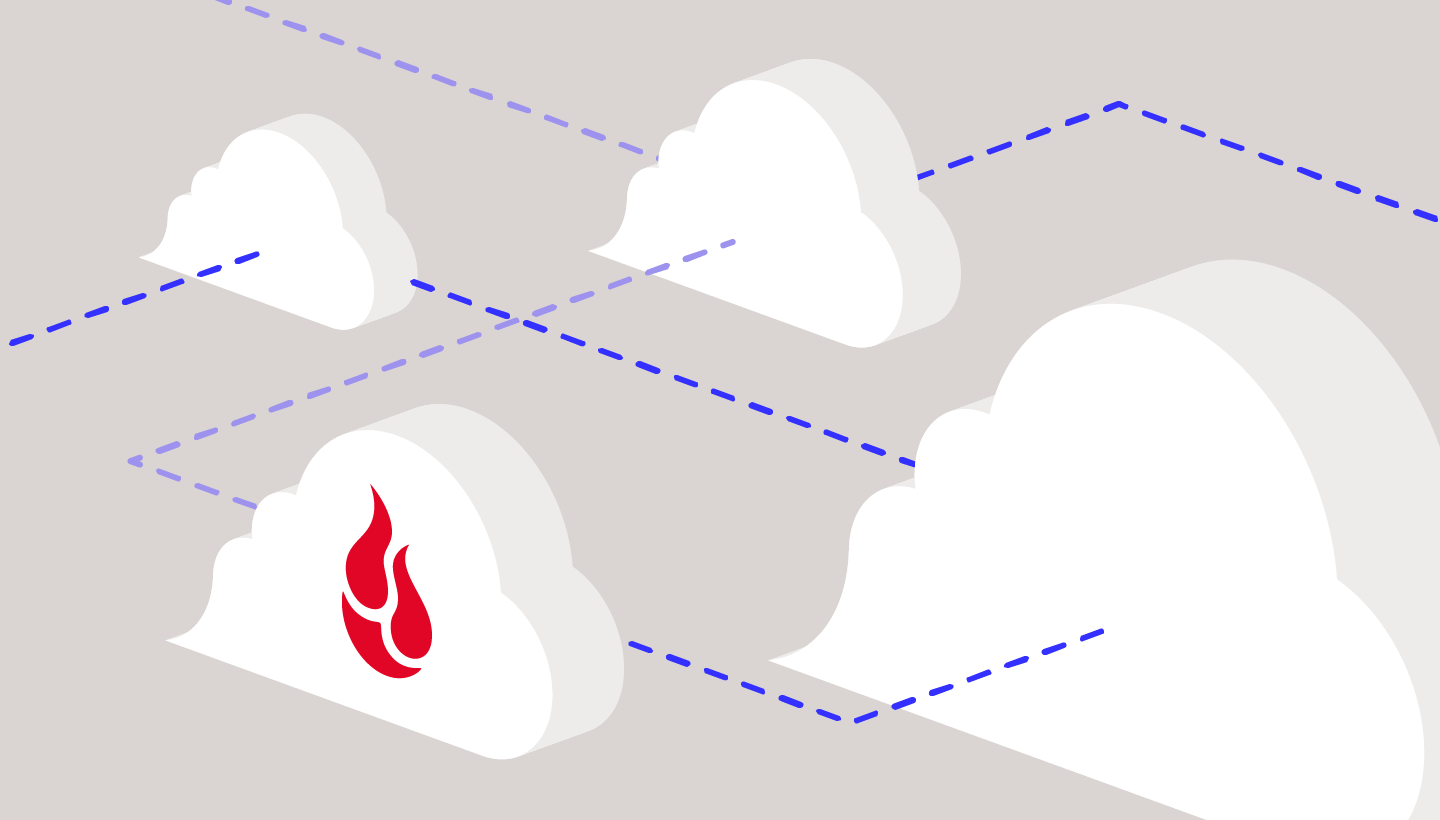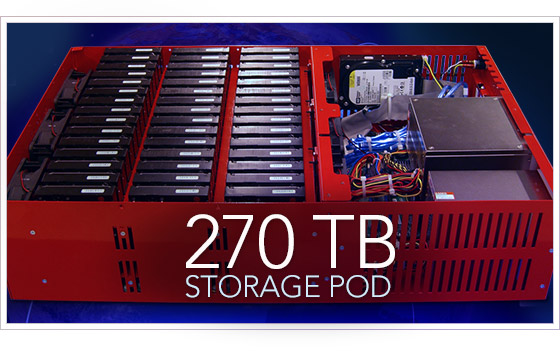
Storage Pod 796 went through the standard build process for any Backblaze Storage Pod. Little did it know that destiny was waiting. At the end of the assembly line, instead of 45 Seagate 4TB drives, Pod 796 would receive 45 Western Digital 6TB drives (Model: WD60EFRX). Doing the math, 45 times six is 270, so Pod 796 would be the first 270TB Backblaze Storage Pod. After the break-in tests and RAID-syncs, Pod 796 will be ready for customer data. If you are lucky over the next couple of weeks some of your data may be stored on Pod 796 as it becomes part of Backblaze lore.
We also just received a shipment of Seagate 6TB drives (Model: ST6000DX000), which we will be building into a Pod shortly, but first up is Western Digital.
What’s the Big Deal?
The most obvious thing about a 270TB Backblaze Storage Pod is there is now 50% more storage in the same 4U chassis as before. No changes or updates were required to the Storage Pod 4.0 design to accommodate the new drives. That’s one of the advantages of using off-the-shelf, standardized components in our Pod design.
We usually rack 10 Backblaze Storage Pods into each individual cabinet in the data center. The increase in drive size to 6TB means a data center cabinet that held 1.8PB of data (10 Pods times 180TB per Pod) before can now hold 2.7PB of data.
One of the nice things about the 6TB drives from Western Digital is that they appear to use less electricity than the current Seagate 4TB drives we are using. In our case, we pay a flat rate for our data center cabinets, which includes electricity up to a 24 Amp peak. So while the Western Digital 6TB drives may lower our electrical use, it will not lower our costs. Still it is nice that the Western Digital drives may help us save a few watts.
For those of you wondering why we don’t use metered electricity, the answer is we pay a fixed cost for the combination of the rack and the electricity. This arrangement has the benefit of making these components of our data center costs predictable over an extended period of time.
Why 6TB Drives Now?
In the past, we’ve typically moved to a larger sized drive when the difference in price was about $0.005 per gigabyte, as seen in the chart below.
| Cost per GB when Backblaze changed hard drive size. | ||||||
| Date | 1TB | 1.5TB | 2TB | 3TB | 4TB | Difference |
|---|---|---|---|---|---|---|
| April 2009 | 0.09465 | 0.09951 | 0.00486 | |||
| March 2010 | 0.07509 | 0.07980 | 0.00472 | |||
| April 2011 | 0.05429 | 0.05887 | 0.00458 | |||
| December 2012 | 0.04903 | 0.05410 | 0.00507 | |||
Below we compute the difference between the cost per gigabyte of the 4TB and 6TB drives we recently purchased.
| The cost to switch from 4TB to 6TB drives. | ||||||
| Drive Size | Cost | Cost/GB | ||||
|---|---|---|---|---|---|---|
| 6 TB | $275 | $0.0458 | ||||
| 4 TB | $142 | $0.0355 | ||||
| Difference | $133 | $0.0103 | ||||
We are paying over a full penny more per gigabyte for the 6TB drives. Why switch now, when it will increase our cost? Two reasons: the pricing curve and experience:
- Except for the tumultuous period of the Thailand Drive Crisis, the cost per gigabyte of hard drive storage has moved steadily down the past 30 years. Within the overall decrease, the cost of a given drive generally follows the curve shown below over time. Currently, 6TB drives are at the top of their curve and their cost/GB should decrease over time. Meanwhile, 4TB drives are nearing the bottom of their curve with their cost/GB flattening out. Early in 2015 we expect the cost/GB of 6TB drives will “cross under” the cost/GB of 4TB drives.
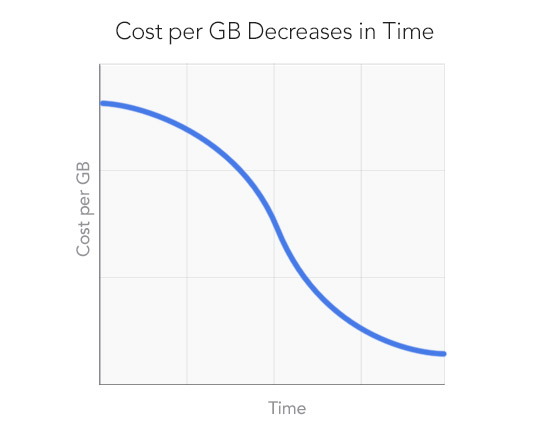
- This brings us to the second reason, by starting today with 6TB drives we get valuable experience with the different drive models from the different vendors. We have found there is a wide range of longevity and performance among the different hard drives available for us to use. When the time comes to switch to 6TB drives, we’ll have the data we need to purchase the best performing drives for our environment.
The Backblaze Cross Under Point
Above we noted that the 6TB cost per gigabyte will “cross under” the 4TB cost per gigabyte. Assuming that the price of a 4TB drive stays at about $142, the market “cross under” point occurs when a 6TB drive is at $213. For Backblaze, the “cross under” occurs sooner when you consider the cost of the Storage Pod itself into the equation.
| When 6TB drives cross under for Backblaze. | ||||||
| 4 TB Drives Current |
6 TB Drives Current |
6 TB Drives Cross Under |
||||
|---|---|---|---|---|---|---|
| Storage in GB | 180,000 | 270,000 | 270,000 | |||
| # of Drives | 45 | 45 | 45 | |||
| Drive Cost | $142 | $275 | $250 | |||
| Cost of Drives | $6,390 | $12,375 | $11,250 | |||
| Cost of Pod Chassis | $3,388 | $3,388 | $3,388 | |||
| Pod with Drives | $9,778 | $15,763 | $14,638 | |||
| Cost per GB | $0.05432 | $0.05838 | $0.05421 | |||
When you factor in the cost of the Storage Pod, the cross under point for Backblaze occurs when the price falls below $250. Of course, the cost of 4TB drives will decrease to some degree affecting the math, but it is reasonable for Backblaze to expect to change over to 6TB drives when their unit price falls into the $240-$250 range.
$5/Month Math
The transition to 6TB drives for our Storage Pods is one example of how we manage our costs. The variable cost from the discussion above is the cost of the hard drives. Increasing the hard drive size does not affect the cost of the data center cabinets or the cost of maintaining the units. It is the cost per gigabyte of the hard drives we use and their average life expectancy that are the variable cost. Therefore, we’ll pay a small premium upfront before we switch to 6TB hard drives to ensure we are buying the right model drives from the right manufacturer at the right time in hard drive pricing curve. This keeps our costs down so we can continue to provide unlimited data storage at $5/month.
We’ll continue to build and burn-in 270TB Storage Pods with different drive models over the coming months and keep you updated on how things go.


